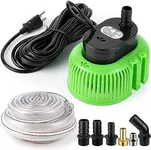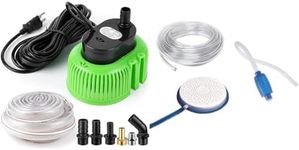Buying Guide for the Best Sump Pumps
Choosing the right sump pump is crucial for protecting your basement or crawl space from flooding and water damage. A sump pump is designed to remove water that accumulates in a sump basin, typically found in the basement of homes. When selecting a sump pump, it's important to consider several key specifications to ensure you get the best fit for your needs. Understanding these specifications will help you make an informed decision and keep your home dry and safe.TypeThere are two main types of sump pumps: submersible and pedestal. A submersible pump is designed to be placed inside the sump basin and is submerged in water. This type is generally quieter and more efficient but can be more expensive. A pedestal pump has a motor that sits above the sump basin, making it easier to access for maintenance but can be noisier. Choose a submersible pump if you prefer a quieter operation and have a larger budget, or a pedestal pump if you want easier access for maintenance and a potentially lower cost.
Horsepower (HP)Horsepower measures the power of the sump pump's motor. Common ratings are 1/4 HP, 1/3 HP, 1/2 HP, and 3/4 HP. A higher horsepower pump can move more water and handle larger volumes, which is important if your basement is prone to heavy flooding. For light to moderate water issues, a 1/4 HP or 1/3 HP pump is usually sufficient. For larger basements or areas with frequent heavy flooding, consider a 1/2 HP or 3/4 HP pump.
Flow RateThe flow rate indicates how much water the pump can move, usually measured in gallons per hour (GPH). This is important because it determines how quickly the pump can remove water from your basement. Flow rates can range from 1,000 GPH to over 4,000 GPH. For minor water issues, a lower flow rate may be adequate. For significant flooding, look for a pump with a higher flow rate to ensure it can keep up with the water inflow.
Head PressureHead pressure, or maximum head, refers to the maximum height the pump can lift water. This is crucial if you need to move water a significant vertical distance, such as from a deep basement to ground level. Head pressure is measured in feet, and typical values range from 10 to 25 feet. If your discharge point is far above the sump basin, choose a pump with a higher head pressure to ensure it can effectively move the water.
Switch TypeSump pumps use different types of switches to activate the pump when water levels rise. The main types are float switches, diaphragm switches, and electronic switches. Float switches are the most common and reliable, using a floating device to trigger the pump. Diaphragm switches use pressure changes to activate the pump, while electronic switches use sensors. Float switches are generally a good choice for most homeowners due to their reliability. If you have a narrow sump basin, a diaphragm or electronic switch may be more suitable.
MaterialThe materials used in the construction of the sump pump affect its durability and longevity. Common materials include plastic, cast iron, and stainless steel. Plastic pumps are lightweight and resistant to corrosion but may not be as durable. Cast iron and stainless steel pumps are more robust and can handle more wear and tear, making them ideal for heavy-duty use. Choose a plastic pump for light-duty applications and a cast iron or stainless steel pump for more demanding conditions.
Battery BackupA battery backup system ensures that your sump pump continues to operate during a power outage, which is when you might need it the most. This is especially important if you live in an area prone to storms and power outages. Battery backup systems can vary in capacity and runtime. If you experience frequent power outages, investing in a sump pump with a reliable battery backup system is highly recommended to keep your basement dry even when the power is out.
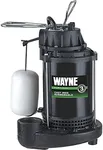
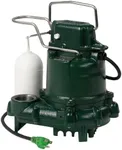

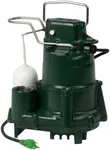
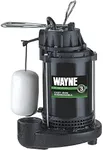



![WAYNE - 1/2 HP Basement [Sump] [Pum](https://images-proxy.bestreviews.guide/saeX_nQo4HYYFHCOO0cLtOoGIKA=/0x150/https://m.media-amazon.com/images/I/41QwOPf-mFL._AC_CX679_.jpg)




